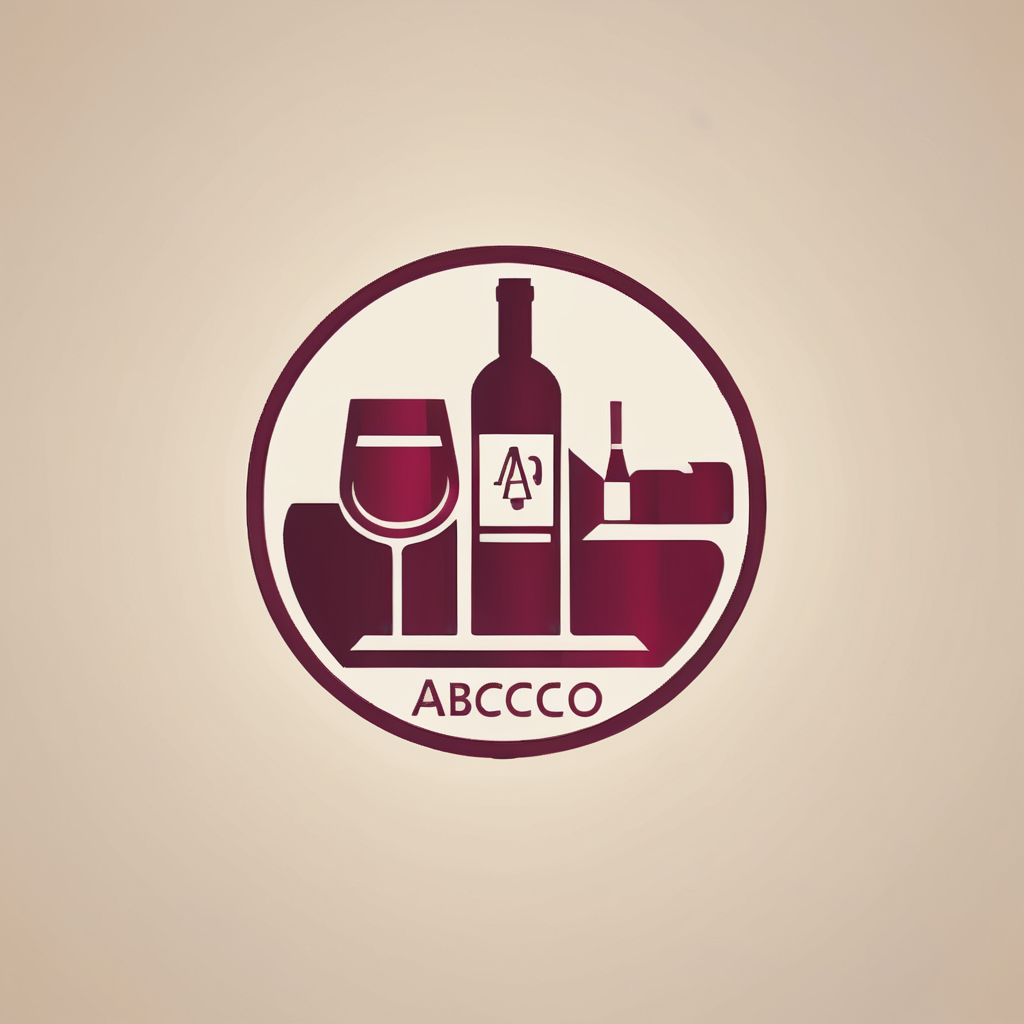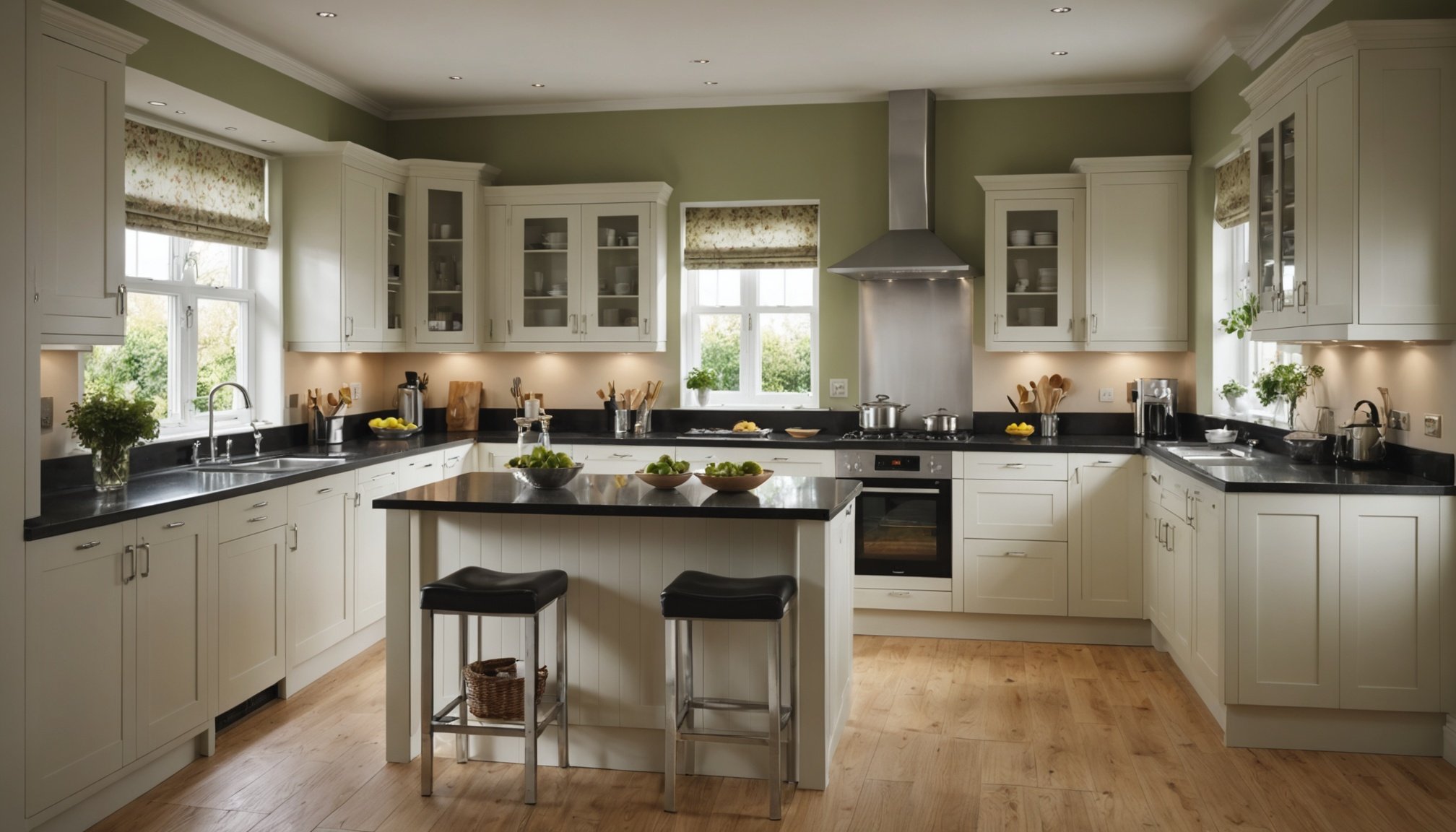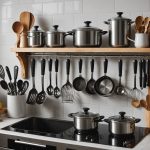Optimising Workflow in Small UK Kitchens
Creating an efficient kitchen layout in a compact space is essential to enhance productivity and comfort. For many UK homes, where kitchen size is limited, optimising the compact kitchen workflow means carefully considering movement patterns and the placement of key zones: preparation, cooking, and cleaning.
The principle of workflow in small kitchens involves minimising unnecessary steps. For example, placing the sink, stove, and fridge in a triangular arrangement reduces walking distance and streamlines tasks. This arrangement supports a natural flow and prevents crowding, which is especially important in UK kitchens where spatial constraints are common.
Have you seen this : Top design hacks for maximizing space in a narrow uk kitchen
Common spatial challenges in UK homes include narrow worktops, limited storage, and awkward corners. Clever use of vertical space with wall-mounted storage or pull-out pantry units can solve these issues effectively. Additionally, integrating multi-functional appliances helps maintain a tidy and organised workflow.
By focusing on these elements—efficient kitchen layouts, workflow principles, and solving typical UK space challenges—small kitchens can feel more spacious and practical. This approach ensures every inch is optimised without overwhelming the user, making cooking an easier and more enjoyable experience.
Have you seen this : Transform your uk kitchen into a healthy eating haven: tips for space optimization
Actionable Layout Strategies for Maximum Efficiency
When considering kitchen layout tips, one of the most reliable principles is the triangle workflow. This involves positioning the sink, stove, and refrigerator to form an efficient work triangle, minimizing unnecessary movement and streamlining tasks. In small spaces, utilising the kitchen work triangle effectively can make even a compact kitchen feel spacious and functional.
Classic UK kitchen design examples offer practical insights. For instance, the galley layout is perfect for narrow spaces, with parallel counters enabling a seamless workflow. The L-shape layout suits corner spaces, providing both work zones and open areas that invite versatility. Meanwhile, the U-shape layout maximises available wall space, enclosing the cook’s workspace while allowing multiple access points.
Adapting these layouts for awkward UK kitchen footprints is essential. This means customizing counter depth, relocating appliances, and using vertical storage to maintain the triangle workflow. Precise measurements and flexible design adjustments ensure efficiency regardless of shape or size, enhancing both usability and aesthetics. Implementing these kitchen layout tips guarantees a better flow and a more enjoyable cooking experience.
Innovative Organisation and Storage Solutions
Creating efficient kitchen storage is essential, especially in compact homes. One effective approach involves vertical storage solutions such as tall shelving units or wall-mounted racks. These maximize space by utilizing wall height, freeing up countertops and floors. Open shelving adds a modern touch while keeping essentials within easy reach, balancing accessibility with aesthetics.
For tighter spots, custom cabinetry fitted precisely to your kitchen’s dimensions can transform narrow areas into valuable storage. Pull-out systems designed for slim spaces allow for organized storage of utensils, spices, or cleaning supplies without compromising accessibility. These smart organisation UK solutions blend functionality with style, making the most of every inch.
Additionally, integrating built-in and hidden storage options, like under-counter drawers or concealed compartments, enhances tidiness without clutter. These solutions prevent overcrowding by keeping items tucked away yet readily available. Altogether, adopting these space-saving ideas streamlines your kitchen, elevating both usability and design.
By combining innovative features like vertical shelving, tailored pull-outs, and clever hidden compartments, you can create a kitchen that is practical and visually appealing—perfect for any home striving for clever storage.
Multi-functional Furniture for Small Kitchens
Small kitchens benefit greatly from multi-functional kitchen furniture that maximizes every inch of space without compromising style. In the UK, space-saving furniture is increasingly popular due to limited kitchen dimensions in many homes.
A standout choice is foldable and extendable kitchen tables, which provide flexibility for daily use and can expand to accommodate guests. These tables often include additional storage underneath, combining multiple functions seamlessly.
Island solutions are another excellent option. They frequently offer built-in storage drawers and seating, transforming a simple kitchen island into a versatile hub for cooking, dining, and socializing. This approach is ideal for open-plan layouts, enabling efficient workflow and space utilization.
Moreover, integrated appliances and compact utility furniture further enhance functionality. Consider units that combine appliance storage with workspace, or pull-out counters that increase surface area when needed.
Choosing flexible designs like these not only optimizes limited space but also adapts to varying household needs. For homeowners seeking smart solutions, prioritising multi-functional kitchen furniture is essential to achieving a clutter-free, practical kitchen environment.
Enhancing Movement and Accessibility
Creating a kitchen with excellent kitchen accessibility begins with optimizing the flow. Streamlined traffic routes ensure that cooks and helpers can move without interruption. For example, placing appliances like the refrigerator, stove, and sink in a classic work triangle minimizes unnecessary steps, boosting efficiency and comfort.
In compact kitchen ergonomics, the arrangement of major appliances is critical. Appliances should be positioned to avoid congestion yet remain within easy reach, improving the overall workflow. This setup reduces fatigue and allows multiple users to share the space effectively.
Lighting also plays a vital role in enhancing accessibility. Bright, strategically placed lights can visually open up a kitchen, making it feel larger and easier to navigate. Ambient and task lighting combined reduce shadows around work areas, contributing to safer and more pleasant movement.
By focusing on flow optimization through careful design choices, your kitchen can become more accessible and enjoyable to use, adapting well even in smaller or busier households. Thoughtful layout and lighting come together to create a space that feels both spacious and functional.
Tailoring Design to UK Standards and Trends
Designing for UK homes means aligning with British kitchen standards and local building regulations. These requirements impact measurements, safety, and functionality. For example, UK regulations specify minimum clearances around kitchen appliances and workspaces to ensure ease of use and compliance with building codes. By adhering to these standards, your kitchen design will be both practical and safe.
Current trends in British kitchen design emphasize compact, efficient layouts, suitable for smaller spaces common in UK homes. Designers now focus on maximizing storage, integrating smart technology, and selecting durable materials that withstand busy UK households. Popular finishes include muted tones and natural textures, reflecting a blend of modern and traditional styles.
Visual inspiration is key to successful design. Drawing from real UK homes and expert sources provides insight into how these trends manifest in practice. Whether it’s a cozy London flat or a countryside cottage, studying authentic examples helps tailor your kitchen to fit local tastes and lifestyle needs. Incorporating local design inspiration ensures your outcome feels genuinely British while meeting all necessary standards.



